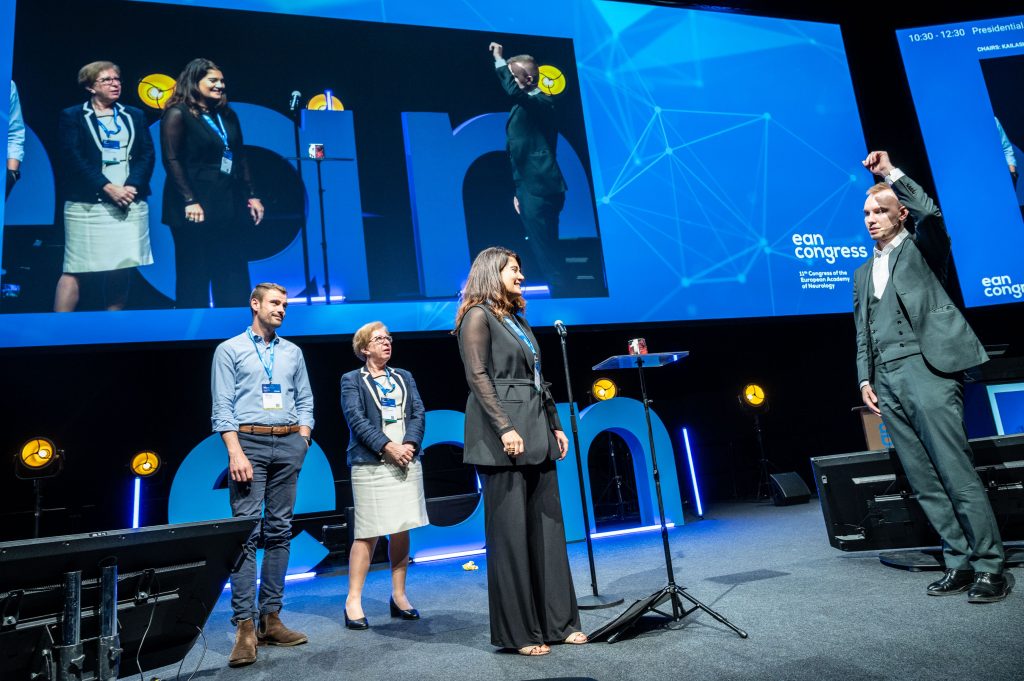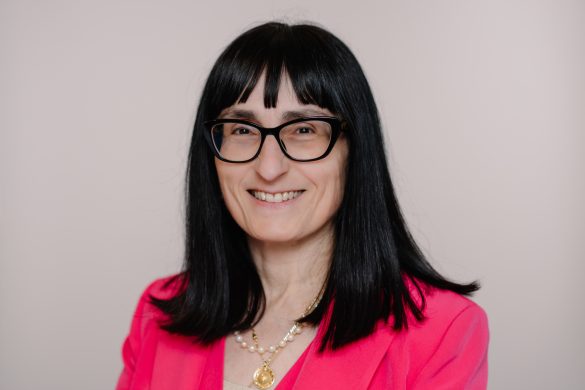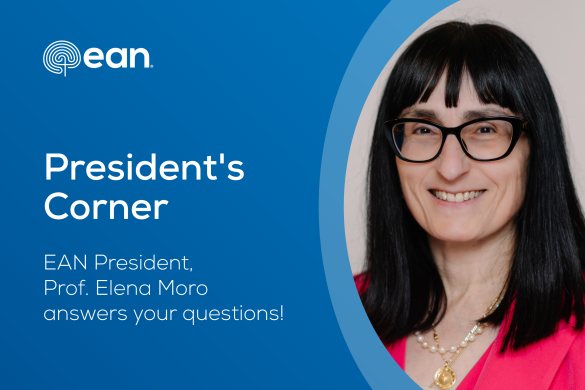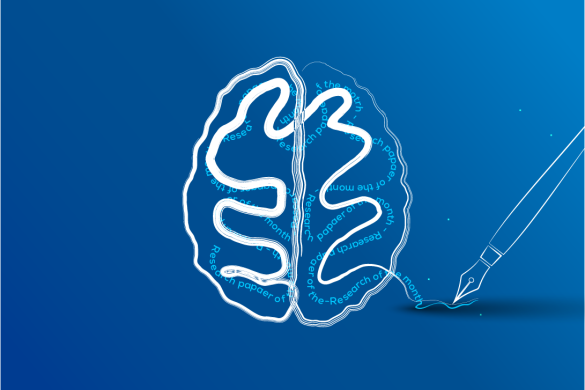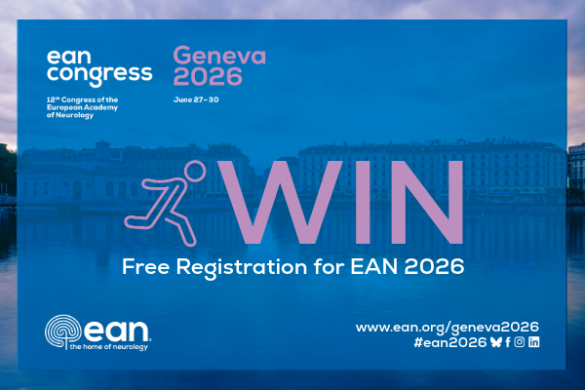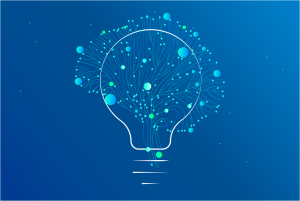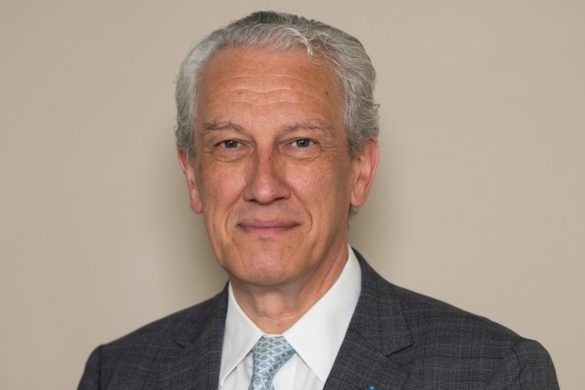by Hugo Hermantin
The EAN 2025 Presidential Symposium in Helsinki explored the latest frontiers of neuroscience – from theoretical models of brain function to cutting-edge insights on multiple sclerosis, neurodegeneration, sleep physiology and movement disorders. Chaired by EAN President, Elena Moro, and President-Elect, Kailash P. Bhatia, the session once again showcased some of the brightest minds shaping the future of neurology and neuroscience.
The 2024 Brain Prize Lecture: understanding how the brain represents the world
Kicking off the session, Prof. Haim Sompolinsky, recipient of the prestigious Brain Prize 2024 from the Lundbeck Foundation, presented a lecture on the foundations of theoretical neuroscience. As Professor of Molecular and Cellular Biology and of Physics at Harvard University and Professor Emeritus at the Hebrew University of Jerusalem, Sompolinsky has been pioneering the exploration of how the brain interprets and represents the external world.
Missed the session?
Watch it on demand via our Virtual Congress Platform – click here!
His lecture offered deep insights into how the brain maintains stability between the constant influx of sensory stimuli and its neural dynamics to shape cognition, perception, memory and creativity. Sompolinsky explained how these internal-external interactions allow the brain to generate hypotheses about reality, create memories and make predictions – while also shedding light on neurological disorders and the mechanisms of compensation in disease states. His work offers hope for understanding the neural basis of creativity, spontaneity and potential future therapeutic approaches for cognitive disorders.
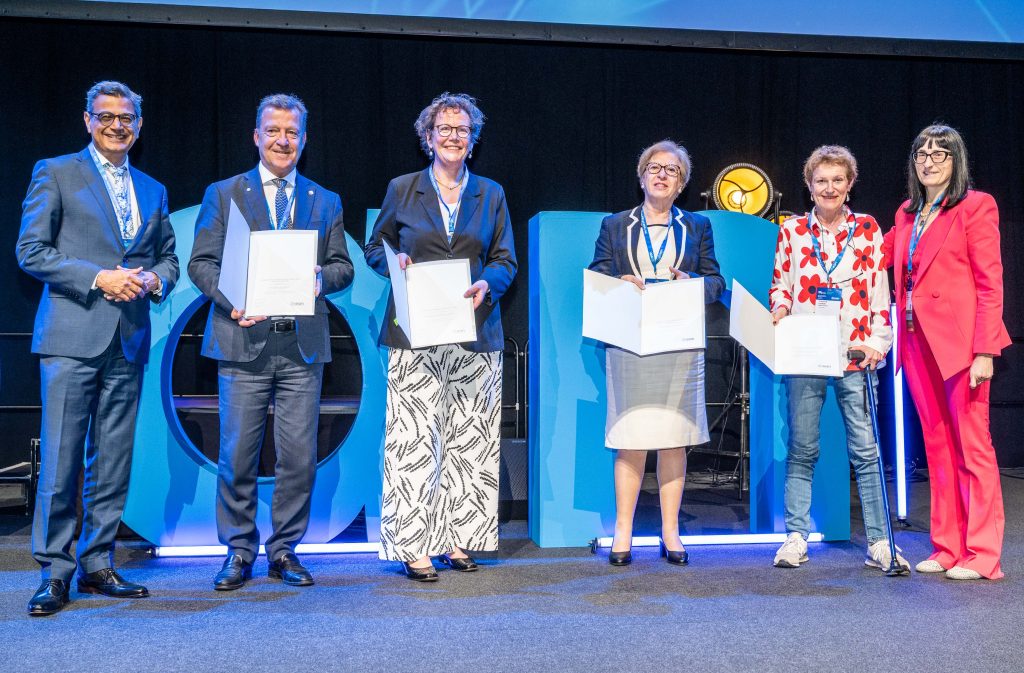
Anita Harding Award Lecture: multiple sclerosis, from basic science to clinical translation – a focus on nodes of Ranvier and electrical activity
Prof. Catherine Lubetzki, the inaugural recipient of the Anita Harding Award – created to honour women leaders in neurology – delivered an engaging lecture connecting her cutting-edge research on multiple sclerosis (MS) with clinical practice. As a professor at Sorbonne University and Head of the Department of Neurological Diseases at Paris’ Pitié Salpêtrière Hospital, Lubetzki’s work has been instrumental in revealing how neuronal electrical activity promotes both myelination and remyelination.
She highlighted recent discoveries about the role of prenodes in the formation of nodes of Ranvier and how electrical signals can guide remyelination processes – opening new therapeutic avenues for MS. Her findings also underscore the relationship between neurons, microglia and the myelination process, with promising implications for restoring function in demyelinating diseases.
Camillo Golgi Award Lecture: protein aggregation and its relevance for neurodegenerative disease
Prof. Maria Grazia Spillantini of the University of Cambridge delivered the prestigious Camillo Golgi Award Lecture, focusing on the role of protein aggregation in the pathogenesis of neurodegenerative diseases such as Alzheimer’s and Parkinson’s disease.
Spillantini looked back at her pioneering work in identifying tau protein isoforms and their role in disease-specific aggregation patterns – contrasting the six isoform inclusions in Alzheimer’s with selective patterns in other diseases. Her laboratory’s efforts to generate novel poly- and monoclonal antibodies are paving the way toward more precise biomarkers and disease-modifying therapies.
Charles-Edouard Brown-Séquard Award Lecture: sleep by the brain, for the brain; implications for neurology
Sleep expert Prof. Claudio Bassetti gave a comprehensive overview of how sleep serves both fundamental and restorative functions for brain health during the Charles-Edouard Brown-Séquard Award Lecture. He outlined how sleep regulates energy conservation, protein synthesis, brain clearance, synaptic plasticity, motor learning and behaviour – arguing that disturbances in these mechanisms can be among the first signs of neurological disease.
Bassetti emphasised that sleep-wake disruptions are frequently observed across neurological conditions – from neurodegeneration to stroke – highlighting the importance of integrating sleep assessment and management into neurological care. “Sleep has tremendous impacts on brain health,” he concluded, calling for a new focus on sleep in clinical neurology and public health.
Moritz Romberg Award Lecture: myoclonus, you need to know it to see it
The session concluded with Prof. Marina de Koning-Tijssen, recipient of the Moritz Romberg Award, who shed light on the often-overlooked world of myoclonus, a jerky movement disorder frequently misdiagnosed in clinical practice.
She outlined the various subtypes of myoclonus based on their origin – cortical, subcortical, spinal or peripheral – and how precise diagnosis can guide treatment decisions. With a prevalence of 8.6 per 10,000 people, myoclonus remains underrecognised, particularly among older populations where co-occurrence with other movement disorders is common. Her talk underscored the need for better clinician awareness and diagnostic skills to improve outcomes in these complex cases.
A touch of magic
Between the scientific lectures, the audience was delighted by a magic show celebrating the power of imagination, underscoring the importance of creativity in science. As the 2025 Presidential Symposium demonstrated, the future of neurology depends on uniting theoretical insights, translational research and clinical excellence – and the EAN remains at the forefront of this transformation.
